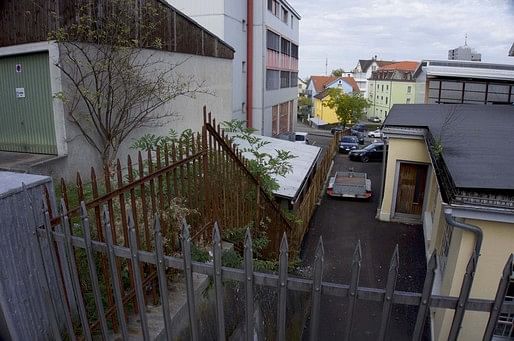
Like many cities in Switzerland, Rorschach—on the shore of Lake Constance—recognizes the need for urban planning and design strategies that increase urban density, enhance the urban character of the city, and improve the quality of life for residents.

When developers expressed interest building in the Löwenstrasse West Area, the City commissioned Professor Ray Isaacs (UWMilwaukee Department of Architecture; Designer, ERR-AG) and Judith Rütsche (MS, UW-Madison; Director of Planning, Basler & Hofmann) to make recommendations for development. Isaacs and Rütsche proposed that they develop an urban design vision and urban design guidelines that would coordinate not only the future buildings within the area, but also improvements in the urban infrastructure, including connectivity, pedestrian networks, public open space, rainwater management, and integration with surrounding neighborhoods.


The Löwenstrasse West Area lies between the entry to the City to the West and the entry to Downtown District to the East. According to the Master Plan, the Area is embedded within a single quarter.
 However, Isaacs and Rütsche discovered that the existing underutilized industrial buildings, along with a steep topographic slope separate the designated quarter into a lower neighborhood on the lakefront and an upper neighborhood disconnected from the lake with essentially no public open space.
However, Isaacs and Rütsche discovered that the existing underutilized industrial buildings, along with a steep topographic slope separate the designated quarter into a lower neighborhood on the lakefront and an upper neighborhood disconnected from the lake with essentially no public open space.
 The Löwenstrasse West Area is essentially a hole in both the physical and social environment. The vision proposed by Isaacs and Rütsche is to “fill the hole” with dense urban development, yet add a more intricate pedestrian network that facilitates seamless movement between existing, currently disconnected neighborhoods.
The Löwenstrasse West Area is essentially a hole in both the physical and social environment. The vision proposed by Isaacs and Rütsche is to “fill the hole” with dense urban development, yet add a more intricate pedestrian network that facilitates seamless movement between existing, currently disconnected neighborhoods.

 The dense building development will be balanced with quality open space, including a small park accessible to everyone.
The dense building development will be balanced with quality open space, including a small park accessible to everyone. 
The project process included three workshops, including invited professionals from the City of Rorschach, the Kanton of St. Gallen, and the developers. This constructive process provided critical feedback on the design proposals and criteria, clarifying goals, intentions, and appropriate outcomes.
The document completed by Isaacs and Rütsche reflects the process: though compromises were made at each stage, the vision became stronger and clearer as concepts, as well as details were discussed and debated. The vision is new, yet contextual; solid, yet flexible. The City Council recently accepted the Vision and Urban Design Guidelines without exception. As part of the first steps of implementation, Isaacs and Rütsche are members of the jury to select the design of the first buildings to be realized in the Löwenstrasse West Area.
Each semester, SARUP turns into a beehive of creative activity, with the collective energy of students and faculty resulting in projects and presentations that excite and intrigue, as they generate enquiry into the disciplines of architecture and urban planning. This blog is an attempt to give a glimpse of our life.
No Comments
Block this user
Are you sure you want to block this user and hide all related comments throughout the site?
Archinect
This is your first comment on Archinect. Your comment will be visible once approved.